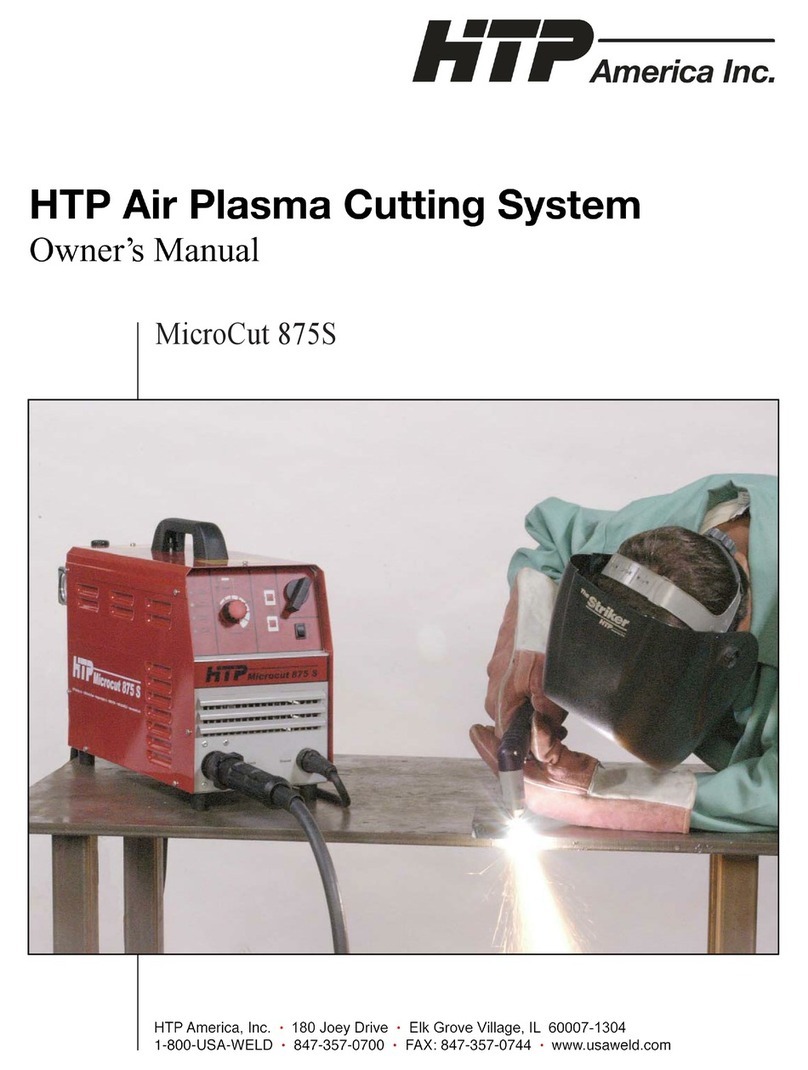In the case of HTP's breach of warranty or any other duty with
respect to the quality of any goods, the exclusive remedies
therefore shall be, at HTP's option (1) repair or (2) replacement
or, where authorized in writing by HTP in appropriate cases, (3)
the reasonable cost of repair or replacement at an authorized
HTP service station upon return of the goods at Customer's risk
and expense. HTP's option of repair or replacement will be
F.O.B., Factory at Arlington Heights, Illinois, therefore; no
compensation for transportation costs of any kind will be
allowed. Upon receipt of notice of apparent defect or failure,
HTP shall instruct the claimant on the warranty claim
procedures to be followed.
HTP America, Inc. has reserved the right to make changes in
design or add any improvements to its products at any time
without incurring any obligation to install same on equipment.
This warranty is null and void unless warranty card is sent to
HTP America, Inc. within 15 days from date of purchase.
ANY EXPRESS WARRANTY NOT PROVIDED HEREIN
AND ANY IMPLIED WARRANTY, GUARANTY OR
REPRESENTATION AS TO PERFORMANCE, AND ANY
REMEDY FOR BREACH OF CONTRACT WHICH, BUT FOR
THIS PROVISION, MIGHT ARISE BY IMPLICATION,
OPERATION OF LAW, CUSTOM OF TRADE OR COURSE OF
DEALING, INCLUDING ANY IMPLIED WARRANTY OF
MERCHANTABILITY OR OF FITNESS FOR PARTICULAR
PURPOSE, WITH RESPECT TO ANY AND ALL EQUIPMENT
FURNISHED BY HTP IS EXCLUDED AND DISCLAIMED
BY HTP.
Limited Warranty
Subject to the terms and conditions hereof, HTP warrants to its
Distributor/Dealer that all new and unused Equipment furnished
by HTP is free from defect in workmanship and material as of
the time and place of delivery by HTP. No warranty is made by
HTP with respect to trade accessories or other items
manufactured by others. Such trade accessories and other items
are sold subject to the warranties of their respective
manufacturers, if any.
Except as specified below, HTP's warranty does not apply to
components having normal useful life of less than one (1) year,
such as relay and contactor points.
HTP shall be required to honor warranty claims on warranted
Equipment in the event of failure resulting from a defect within
the following periods from the date of delivery of Equipment to
the original user:
1. Plasma cutters, power sources and components: 1 year.
2. All plasma torches: 90 days.
3. The electrode, cutting nozzle, insulator, spring, and gas
diffuser are consumable items, WHICH CARRY NO
WARRANTY.
provided that HTP is notified in writing within thirty (30) days
of the date of such failure.
As a matter of general policy only, HTP may honor claims
submitted by the original user within the foregoing periods.
2
Safety Precautions
WARNING: Before performing any installation or operating
procedures read and follow the safety precautions listed below.
Failure to observe these safety precautions can result in
personal injury or death.
Personal Protection: Skin and eye burns resulting from body
exposure to the electric-arc welding rays or hot metal can be
more severe than sunburn:
a. Use a proper face shield fitted with correct filter and cover
plates to protect your eyes, face, neck and ears from sparks
and rays of the cutting arc when cutting or observing cutting.
WARN bystanders not to watch the arc or expose themselves
to the welding-arc rays or hot metal.
b. Wear flameproof gauntlet-type gloves, heavy long-sleeve
shirt, cuffless trousers, high topped shoes and a welding
helmet or cap for hair protection to protect the skin from arc
rays and hot sparks or metal. A flameproof apron may also
be desirable as protection against radiated heat and sparks.
c. Hot sparks or metal can lodge in rolled up sleeves, trouser
cuffs or pockets. Sleeves and collars should be buttoned, and
pockets eliminated from the front of the clothing. Protect
other nearby personnel from arc rays and sparks with a
suitable non-flammable partition.
d. Always wear safety glasses or goggles within the cutting
area. Use safety glasses with side shields or goggles when
chipping slag or grinding. Chipped slag is hot and can travel
considerable distances. Bystanders should also wear safety
glasses or goggles.
Fire Protection: Hot slag, or sparks, can cause serious fires
when in contact with combustible solids, liquids or gases:
a. Remove all combustible materials well away from the
welding area or completely cover the materials with a non-
flammable covering. Such combustible materials include
wood, clothing, sawdust, gasoline, kerosene, paints, solvents,
natural gas, acetylene, propane and similar combustible
articles.




























